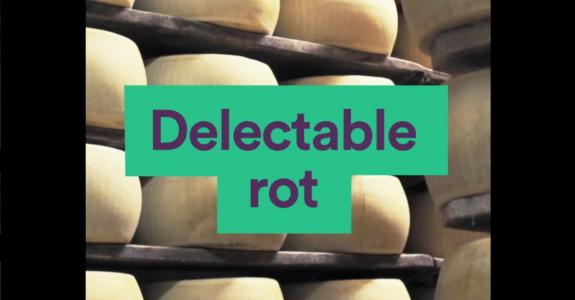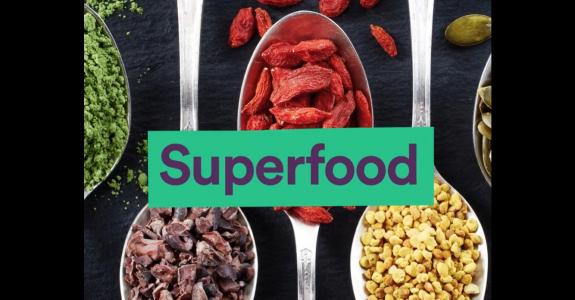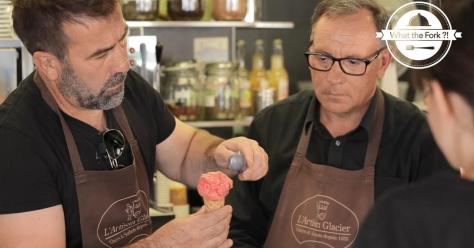

-
Visit
Opening hours From Tuesday to Sunday
October to March:
10:00 - 17:00
April to September:
10:00 - 18:00Contact emailEntrance feesAdults: CHF 15.00
Reduced rate: CHF 12.00
Children 6-15: CHF 6.00
Children 0-5: FreeAddressQuai Perdonnet 25
CH-1800 Vevey
Switzerland - Learn & Play
- About us
- Accessibility
Welcome !
Think. Learn. Interact.
Create an account in seconds and discover the amazing Alimentarium experience !


- Home
- Webseries
Webseries
Gardeners’ tips, meeting local artisans or quick and easy recipes with Philippe Ligron… It’s all on alimentarium TV!
Alimentarium Explainer
See allGarden Stories
See all
The vegetables in our Garden have germinated, grown and ripened. Watch as we harvest some of them, make a ratatouille following the recipe handed down by our grandmothers, and a jar of pickled vegetables that will keep for months… for a taste of sum...

When did humans start cultivating the soil? What can we sow as winter comes to an end? What is the best way of tilling? Did you know that mustard plants can be used as a fertiliser? Discover all this and more in the winter episode of Garden Stories.

Have you got green fingers? Are you more into runner beans than running? You’re in luck as Episode 2 of Garden Stories has just been released! If you would like to learn more about what to plant, what to harvest in early summer, or what to cook with...
What the Fork ?!
See allThe journey our food makes
See all
Saffron is originally from the Near and Middle East, and has long been prized as a spice, remedy, perfume and dye. Known to the Greeks and the Romans, it was neglected in Europe from the 5th century CE. It was reintroduced to Spain by the Arabs in t...

Buckwheat is a dark-coloured grain that arrived in Europe via Russia in the late Middle Ages. It was used as a supplementary harvest crop alongside other basic cereals. This undemanding plant grows quickly and easily, and established itself particul...

Tomatoes originate from America and there are 1700 varieties grown around the world today. They were unheard of in Europe until the 16th century and were rarely eaten by Europeans until the 18th century. Today they have become prominent in the food-...

Kiwi fruit has been known in China for thousands of years, but was first brought to New Zealand in 1904, where it was improved and grown on large plantations. Kiwi fruit began to be exported to Europe and the Americas in the latter half of the 20th ...

Solid chocolate first took off in the 19th century. Thanks to the Industrial Revolution, several prominent figures in the chocolate industry came up with ground-breaking innovations that improved the taste and texture of chocolate. Manufacturing sol...

For a long time, oranges were seen as a luxury food item. The discovery of vitamin C and advertising made them a symbol of fruit that is ‘good for your health’. In Europe and North America, orange juice became more popular than fresh oranges. A larg...

Wheat was one of the very first crops domesticated by human beings in the Neolithic Age and remains a cornerstone of the Western diet. Originally from the Near East, wheat is a cereal in the Gramineae family, characterised by stiff, hollow stalks, e...

Although known for thousands of years, for a long time, chicken was considered a luxury food item. It became more widely available thanks to industrial farming methods that took off following the Second World War. Demand has since grown worldwide an...

Onions have been used for thousands of years both as a vegetable and a condiment, but our appreciation of onions has varied over time and place. Today onions remain a basic source of flavour in countless recipes. Easy to cultivate and store and with...

Olive oil, originating in the Mediterranean Basin, is believed to have been used for thousands of years and is still produced in the same geographic area. Despite competition from other oils, consumption of olive oil is currently on the rise. It is ...

Already popular in ancient times, for centuries asparagus was seen as an exceptional dish reserved for the aristocracy or for feast days. The green or white colour depends on the growing method used. Cultivation is complicated and limited to a short...

Sheep were first domesticated in Mesopotamia some 10 000 years ago and sheep farming was gradually adopted worldwide. Lamb has been considered a choice dish throughout history and, in some religions, carries symbolic value. Sheep adapt to all kinds ...



















